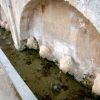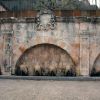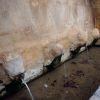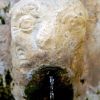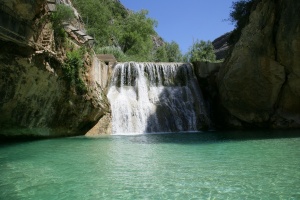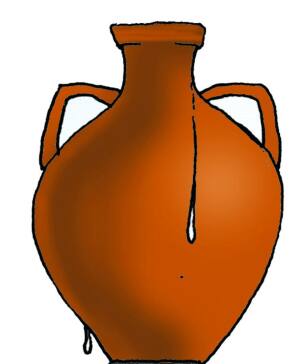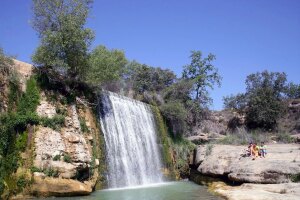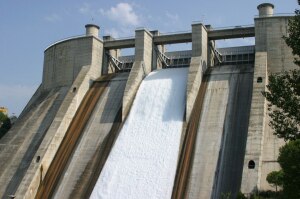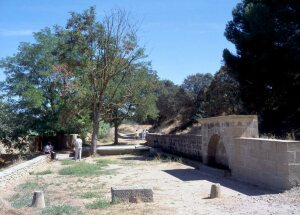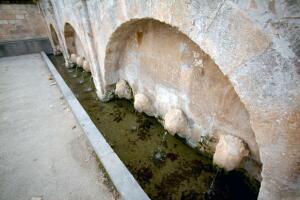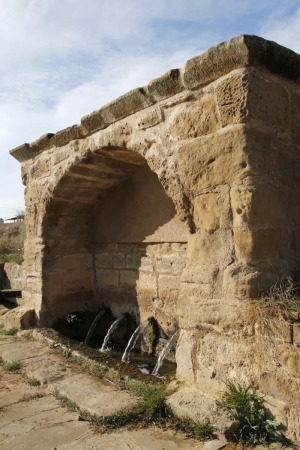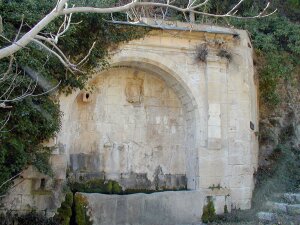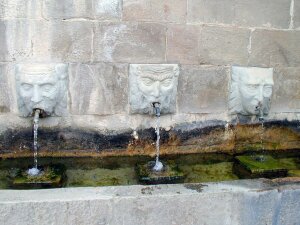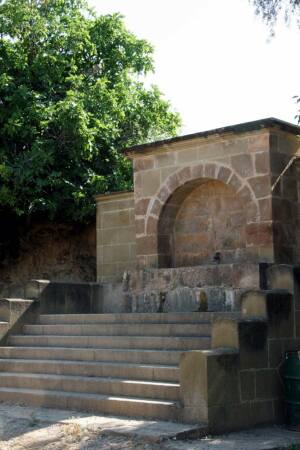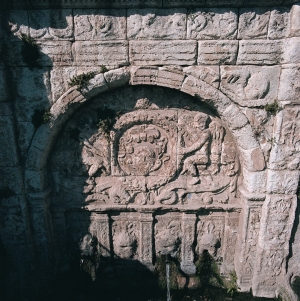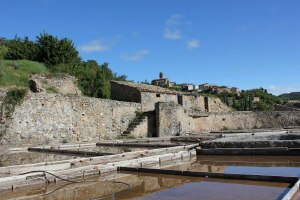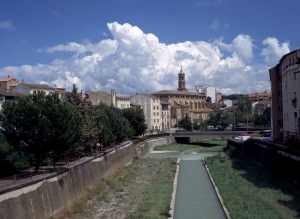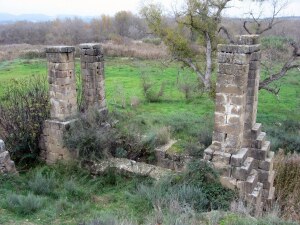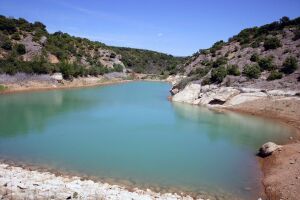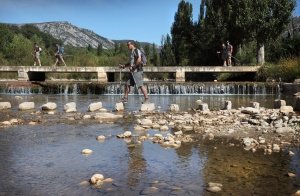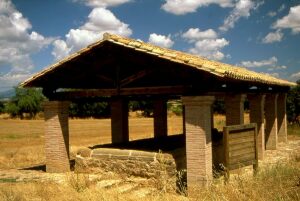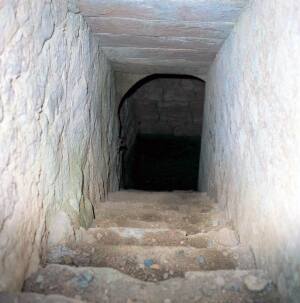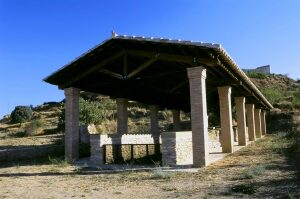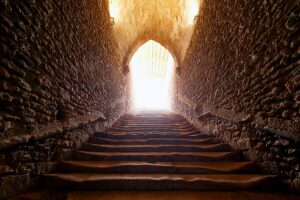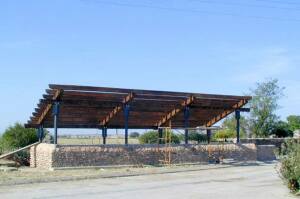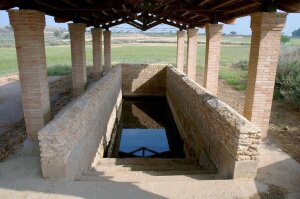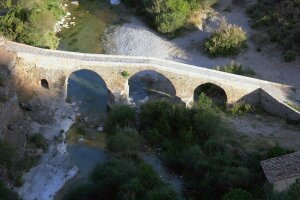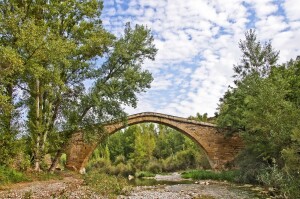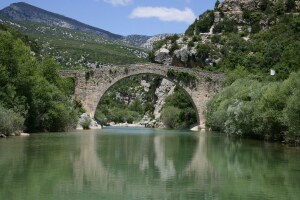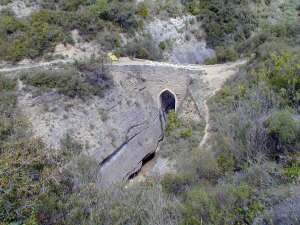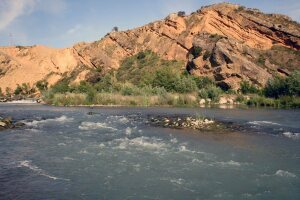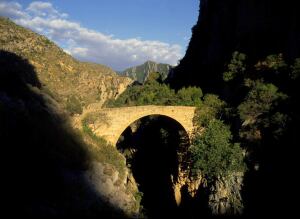The fountain lies near to the vegetable gardens and village allotments. It stands on the site of the most important spring in the area providing more than 60 litres of water per second. The water maintains a temperature of 15-16ºC throughout the year.
The water is brought to the surface by means of a 35 metre tunnel excavated from the rock. It is used to water the vegetable gardens in the immediate vicinity and, by means of underground irrigation channels, also carries water to olive groves, orchards and vineyards.
The fountain dates to 1735 as can be seen from the date etched on its façade and was one of the biggest to be constructed in the Somontano region. In addition to moulded pilasters, capitals with rosettes, chunky leaves and scrolls, it also boasts twelve lions’ heads that open up into water spouts. This style denotes a significant knowledge of classicism on the part of the stone masons.
Due to its structure and decoration it is more representative of an ornamental model of fountain rather than the traditional and more functional style. These were built with a decorative and symbolic function in villages and towns, representing the pride of a society and of the municipal authorities who built them. The patronage of this model is reflected in the coat of arms that crowns the structure, leaving no doubt who was responsible for bringing water and prosperity to the villagers.



